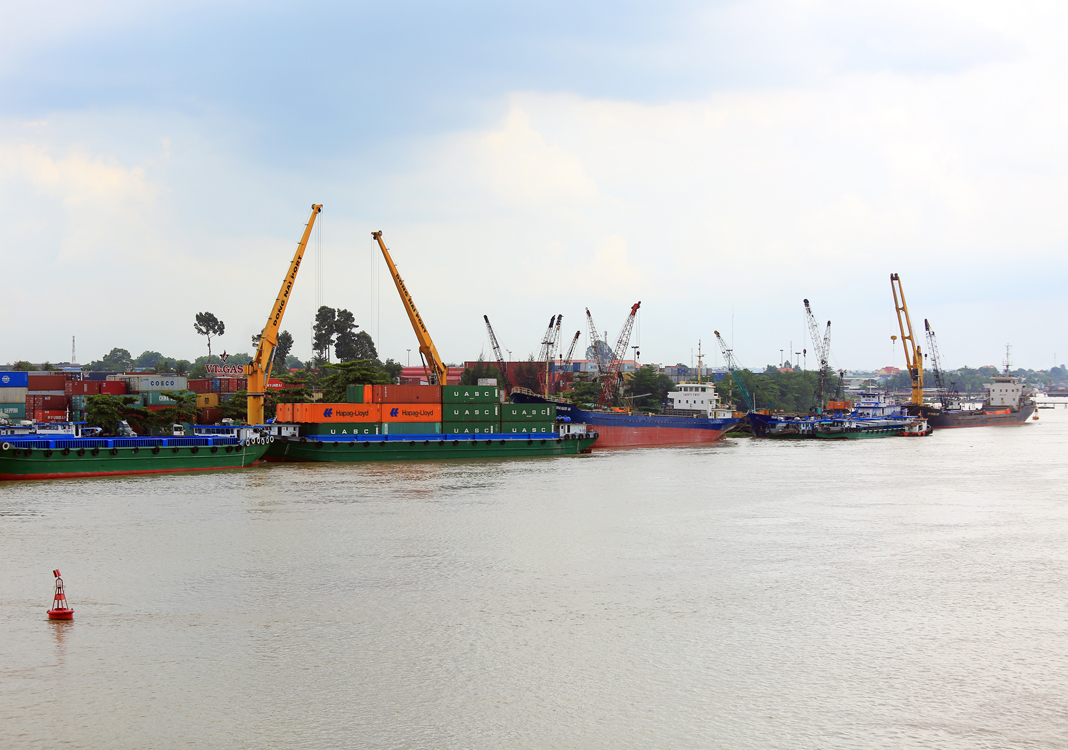Amid the raging coronavirus pandemic across the world and the domestic lackluster economic growth of only 0.36% in the second quarter of this year, Vietnam’s trade activities still posted a positive growth rate. And her trade surplus skyrocketed in June. This situation may sound strange to many.
Data from the General Department of Vietnam Customs indicated that the country’s trade balance made a surprise trade surplus of US$1.8 billion in June. Take the H1 figure into account and you’ll see that Vietnam posted a trade surplus of US$5.5 billion, 3.4 times higher than in the year-earlier period. What captures everybody’s attention most are perhaps the figures in the past three months, from April to June, when the Vietnamese economy bore the brunt of the Covid-19 pandemic. What is surprising more is Vietnam’s trade surplus totaled almost US$2 billion during the second quarter.
Another notable point is apart from the huge trade surplus, Vietnam’s positive export growth rate had come back. Exports in June rose by 17.6% over the previous month and 5.3% year-on-year to some US$22.5 billion. Cumulatively, in the first half of this year, the total export turnover was up 0.2% to some US$123 billion, versus around US$122 billion in 2019.
The reasons
Three main reasons can be cited to explain good performance of foreign trade in the first half. Above all, Vietnam’s trade is heavily reliant on foreign direct investment enterprises. The majority of production materials in many industries are imports. If export suffers a decline in volume, import is likely to face the same setback. Trade surplus would not therefore be significantly impacted. This is a problem of structure because what Vietnam can contribute to the entire process is mostly labor costs.
Secondly, according to corporate production and trading processes, raw materials inventories for production must be in store for at least two, or three months. In other words, enterprises should keep enough materials for production in around two to three months even if their supplies are disrupted. In June this year, import and export rose by 14% and 17.6%, respectively, from the previous month. The slower growth of import versus export showed that enterprises had taken a proactive approach and cut their inventories to a level lower than their normal one. The main reason was that corporate leaders had anticipated a reduction of new orders, which was a key factor helping the balance of trade record a large trade surplus for the first six months and become higher than the average level of about 30%.
Third, the export turnover of phones suffered a downturn because the demand all over the world declined significantly due to Covid-19. Quite contrarily, phone export to China surged by 142% to reach US$3.7 billion in the first half of this year. It might be attributable to the fact that Samsung closed all of its manufacturing plants in China in 2018 and 2019. Therefore, the South Korean tech giant has to ship made-in-Vietnam phones to China for sale.

H2 a big unknown
Usually, Vietnam’s balance of trade posts a high growth rate in the last months of each year and gains a big trade surplus at the same time due to the strong demand for phones, garments and footwear, especially in the United States and the European Union. For example, in the second half of 2019, Vietnam enjoyed a trade surplus of US$10.6 billion, accounting for a whopping 95% of Vietnam’s all-year trade surplus worth over US$11 billion.
The performance of Vietnam’s trade sector in Q2-2020 is now a big unknown, which may be unlike the high surplus in recent years. The reason is that export sales in the April-June period were the results of orders placed last year. A proactive reduction in the amounts of raw materials inventories among enterprises suggests the number of their new orders might be on the wane as Vietnam’s export commodities may be classified as non-essential products, such as phones, clothes and footwear, to name but a few.
However, as shown in the above analyses, Vietnam’s trade structure depends heavily on foreign-invested enterprises. If export falls, import will fall accordingly. It is almost certain that Vietnam will maintain a relatively high surplus throughout 2020. This crucial factor will help the country’s balance of payments maintain a surplus. Plus, a balance of payments surplus means all foreign investment poured into Vietnam is larger than the outflow of money. Simply put, supply is greater than demand when it comes to foreign currencies. Consequently, lower pressure will be piled on the Vietnam dong. Even if the U.S. dollar suffers from a deep dive while the U.S. dollar index (DXY), which measures the strength of the greenback, has fallen by 6.8% before Covid-19 broke out, the dong could appreciate against the greenback in the months that follow.
By Ngoc Khanh









